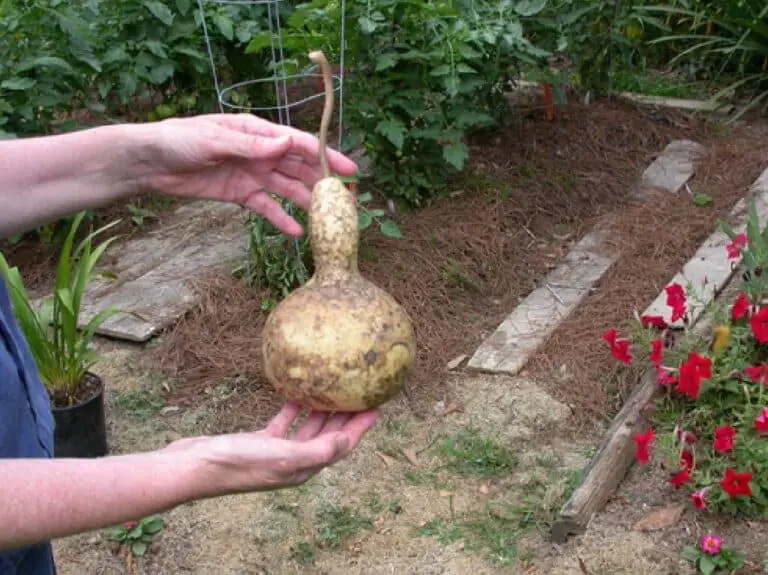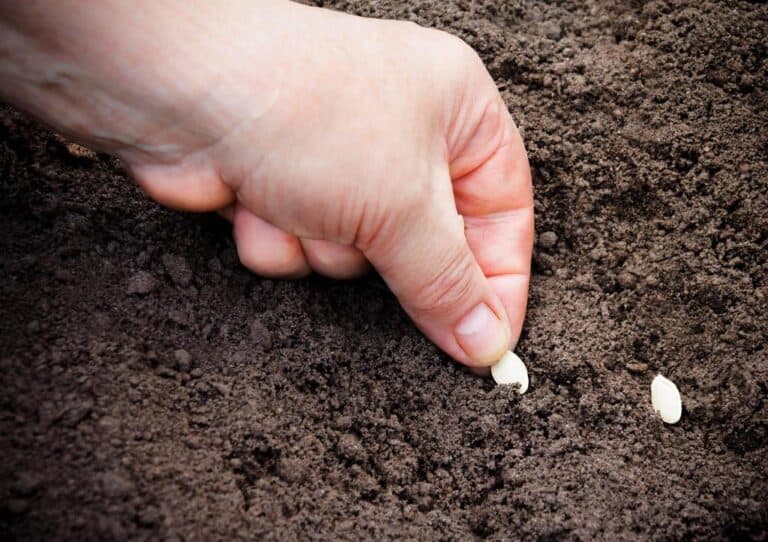Broccoli Plant Spacing: Does Broccoli Need a Lot of Room to Grow?

Plant spacing plays a crucial role in the growth and development of vegetables, and broccoli is no exception. Providing adequate room for your broccoli plants is essential for their overall health, productivity, and disease resistance.
But hey, if you’re worried about limited gardening space, don’t sweat it! We’ve got some nifty tricks up our sleeves to help you maximize your yield even in the tightest of spots. Vertical gardening, companion planting, and container gardening are just a few of the space-saving strategies we’ll explore.
In this article, we will explore the importance of plant spacing, factors influencing broccoli plant spacing, optimal spacing guidelines, techniques for maximizing limited space, common mistakes to avoid, and much more.
So, let’s dive into the world of broccoli plant spacing and learn how to create the perfect environment for your plants to thrive.
Understanding Broccoli Plant Spacing
Broccoli plants are part of the brassica family, which includes other vegetables like cauliflower, cabbage, and kale. These plants have large leaves and require ample space for air circulation and light penetration.
When it comes to broccoli cultivation, plant spacing is not a matter of mere aesthetics; it directly impacts the plants’ well-being. Proper spacing allows for efficient airflow, ample sunlight exposure, and optimal nutrient absorption.
When plants are overcrowded, they compete for resources, leading to stunted growth, increased vulnerability to diseases, and reduced yields. By giving your broccoli plants enough room to breathe, you can create an environment where they can flourish.
To ensure optimal growth, it is essential to provide sufficient room for each broccoli plant. Adequate spacing allows the plants to develop robust root systems, access necessary nutrients, and receive adequate sunlight for photosynthesis.
Factors Influencing Broccoli Plant Spacing
Several factors influence the ideal spacing for broccoli plants. It’s important to consider these factors to determine the appropriate spacing for your specific growing conditions. The factors that play a role in broccoli plant spacing include:
1. Broccoli Variety
Different broccoli varieties have varying growth habits and sizes. Some varieties produce larger plants with bigger heads, while others remain relatively compact. Be sure to research the specific variety you are planting to determine the recommended spacing.
2. Garden Space
The available space in your garden will also influence the plant spacing. If you have limited space, you may need to adjust the spacing accordingly. However, remember that overcrowding can lead to poor growth and lower yields.
3. Companion Planting
Companion planting is an effective gardening technique that involves growing complementary plants together to enhance growth and deter pests. Consider planting broccoli alongside compatible companion plants such as lettuce, spinach, or herbs. This can help optimize space while providing benefits like shade and pest control.
4. Soil Fertility
The fertility of your soil plays a crucial role in determining plant spacing. Broccoli plants thrive in rich, well-draining soil. If your soil is nutrient-deficient, you may need to provide extra spacing to allow for additional fertilization or soil amendments.
5. Climate
Climate conditions can also impact plant spacing. In warmer regions, where broccoli plants may bolt or flower prematurely due to high temperatures, providing slightly wider spacing can help promote air circulation and reduce the risk of bolting.
Optimal Spacing for Broccoli Plants
To give your broccoli plants the best chance of thriving, it’s crucial to follow specific spacing guidelines. Here are some recommended spacing practices for broccoli:
- Individual Plant Spacing: Leave approximately 18-24 inches (45-60 cm) of space between each broccoli plant. This distance allows ample room for the plants to grow and spread their leaves without crowding.
- Row Spacing: Maintain a distance of 24-36 inches (60-90 cm) between rows of broccoli plants. Sufficient row spacing ensures adequate airflow, minimizes shading between plants, and facilitates easy access for maintenance tasks.
Remember that these measurements can vary slightly depending on the broccoli variety you are growing. It’s always a good idea to refer to the specific recommendations provided by the seed supplier or breeder.
Read: How Far Apart to Plant Broccoli?
Techniques for Maximizing Limited Space
If you have limited gardening space, don’t worry! There are several techniques you can employ to maximize the yield of your broccoli plants, even in constrained areas. Here are some space-saving strategies:
- Companion Planting: Utilize companion plants that can grow alongside broccoli and make efficient use of available space. Plants like lettuce, spinach, and radishes have shallow root systems and can be planted between broccoli plants, maximizing space utilization.
- Vertical Gardening: Grow your broccoli vertically by using trellises, cages, or stakes. This technique allows the plants to grow upward, saving horizontal space. Ensure the support structure is sturdy enough to handle the weight of the plants.
- Container Gardening: If you have limited outdoor space, consider growing broccoli in containers. Choose large containers with a minimum diameter of 12 inches to provide sufficient room for the plants. Ensure the containers have proper drainage and use high-quality potting soil for optimal growth.
- Successive Planting: Instead of planting all your broccoli at once, practice successive planting. This involves sowing seeds or transplanting seedlings at different intervals to stagger the harvest and maximize the use of available space.
- Intercropping: Interplant fast-growing crops, such as lettuce or radishes, in between your broccoli plants. These quick-growing crops will be harvested before the broccoli plants require the additional space, allowing you to make efficient use of the garden area.
- Raised Beds: Construct raised beds to optimize space usage. Raised beds provide better soil drainage, increase growing area, and allow for more efficient plant spacing. You can customize the bed dimensions to suit your available space and gardening preferences.
- Succession Planting: As you harvest mature broccoli heads, immediately replant the space with new seedlings. This continuous cycle of planting ensures a steady supply of fresh broccoli throughout the growing season.
By implementing these space-saving techniques, you can grow a bountiful harvest of broccoli even in limited garden spaces, balconies, or small urban gardens.
Common Mistakes in Broccoli Plant Spacing
When it comes to broccoli plant spacing, there are some common mistakes that gardeners may unknowingly make. Being aware of these mistakes will help you avoid them and ensure the optimal growth of your broccoli plants. Let’s explore these pitfalls and how to steer clear of them:
- Overcrowding: Planting broccoli plants too closely together can lead to overcrowding. This restricts air circulation, increases the risk of diseases, and hampers the plants’ ability to access sunlight and nutrients. Follow the recommended spacing guidelines to provide sufficient room for each plant to thrive.
- Ignoring Mature Size: Neglecting to consider the mature size of broccoli plants can result in inadequate spacing. Each variety has different growth habits and sizes. Take into account the estimated diameter or spread of the mature plants when determining the spacing requirements.
- Uneven Spacing: Inconsistent spacing between plants can create an uneven garden layout. This can lead to inefficient use of space, shading issues, and difficulty in accessing and maintaining the plants. Use measuring tools or spacing guides to ensure consistent and even spacing throughout your garden.
- Late Thinning: Failing to thin out seedlings or transplanting them too late can result in crowded conditions. Thinning involves removing excess seedlings or transplanting them to maintain proper spacing. Thin seedlings when they have developed a few true leaves, ensuring adequate spacing for the remaining plants to grow.
- Failure to Adjust Spacing: Not adjusting plant spacing as the broccoli plants grow can lead to problems. Plants may start to compete for resources and become cramped. Monitor the growth of your broccoli plants regularly and make necessary adjustments to ensure they have enough space at each stage of development.
- Neglecting Airflow: Inadequate airflow between plants can create a favorable environment for diseases. Proper spacing allows air to circulate, reducing humidity levels and minimizing the risk of fungal infections. Ensure adequate spacing to promote good airflow and minimize disease issues.
- Disregarding Shading: Overcrowded broccoli plants can shade one another, limiting sunlight penetration and hampering growth. Ensure that each plant receives ample sunlight by providing appropriate spacing between them. This will help in photosynthesis, leading to healthier and more productive plants.
By being mindful of these common mistakes and taking proactive measures to avoid them, you can promote optimal growth, productivity, and overall plant health in your broccoli garden.
FAQs
Can I plant broccoli closer together if I have limited space in my garden?
While it’s important to provide sufficient spacing for broccoli plants, you can still maximize your garden space by employing techniques like vertical gardening, intercropping, and container gardening.
Can I adjust the spacing if I have a different broccoli variety than what is recommended?
Yes, different broccoli varieties may have varying spacing requirements due to differences in growth habits and mature sizes. Adjust the spacing based on the specific recommendations provided by the seed supplier or breeders.
How often should I monitor and adjust the plant spacing for my broccoli plants?
Regular monitoring is essential throughout the growing season. Adjust the spacing as needed when plants become crowded or require additional room to grow.
Will proper plant spacing prevent all pest issues in my broccoli garden?
While proper plant spacing can help reduce the risk of pest infestations, it is not a foolproof method. Implementing integrated pest management practices, such as regular inspections, using organic pest control methods, and encouraging beneficial insects, is crucial for effective pest management.
Can I grow broccoli in containers with limited space?
Yes, broccoli can be successfully grown in containers. Choose large containers with a minimum diameter of 12 inches, provide adequate drainage, and use high-quality potting soil to ensure optimal growth.
Can overcrowded broccoli plants be transplanted to provide more spacing?
Yes, if you notice overcrowding, you can transplant some of the broccoli plants to provide adequate spacing. Take care not to







